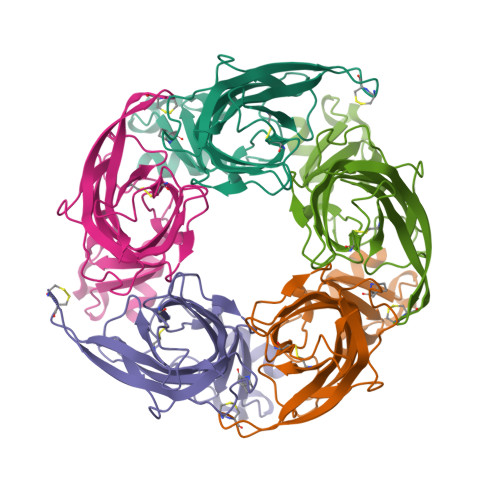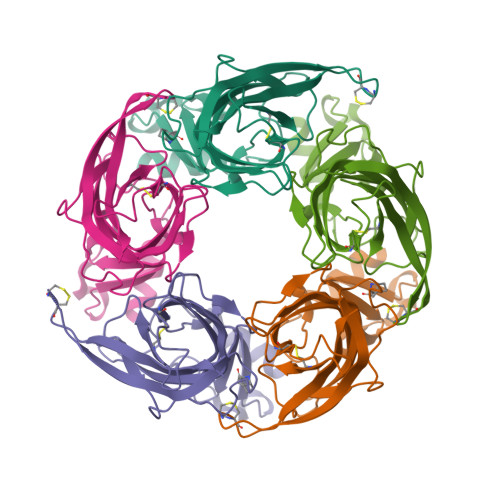Main immunogenic region structure promotes binding of conformation-dependent myasthenia gravis autoantibodies, nicotinic acetylcholine receptor conformation maturation, and agonist sensitivity.
Luo, J., Taylor, P., Losen, M., de Baets, M.H., Shelton, G.D., Lindstrom, J.(2009) J Neurosci 29: 13898-13908
- PubMed: 19890000
- DOI: https://doi.org/10.1523/JNEUROSCI.2833-09.2009
- Primary Citation of Related Structures:
4ZJS - PubMed Abstract:
The main immunogenic region (MIR) is a conformation-dependent region at the extracellular apex of alpha1 subunits of muscle nicotinic acetylcholine receptor (AChR) that is the target of half or more of the autoantibodies to muscle AChRs in human myasthenia gravis and rat experimental autoimmune myasthenia gravis. By making chimeras of human alpha1 subunits with alpha7 subunits, both MIR epitopes recognized by rat mAbs and by the patient-derived human mAb 637 to the MIR were determined to consist of two discontiguous sequences, which are adjacent only in the native conformation. The MIR, including loop alpha1 67-76 in combination with the N-terminal alpha helix alpha1 1-14, conferred high-affinity binding for most rat mAbs to the MIR. However, an additional sequence corresponding to alpha1 15-32 was required for high-affinity binding of human mAb 637. A water soluble chimera of Aplysia acetylcholine binding protein with the same alpha1 MIR sequences substituted was recognized by a majority of human, feline, and canine myasthenia gravis sera. The presence of the alpha1 MIR sequences in alpha1/alpha7 chimeras greatly promoted AChR expression and significantly altered the sensitivity to activation. This reveals a structural and functional, as well as antigenic, significance of the MIR.
Organizational Affiliation:
Department of Neuroscience, University of Pennsylvania Medical School, Philadelphia, PA 19104-6074, USA.



















